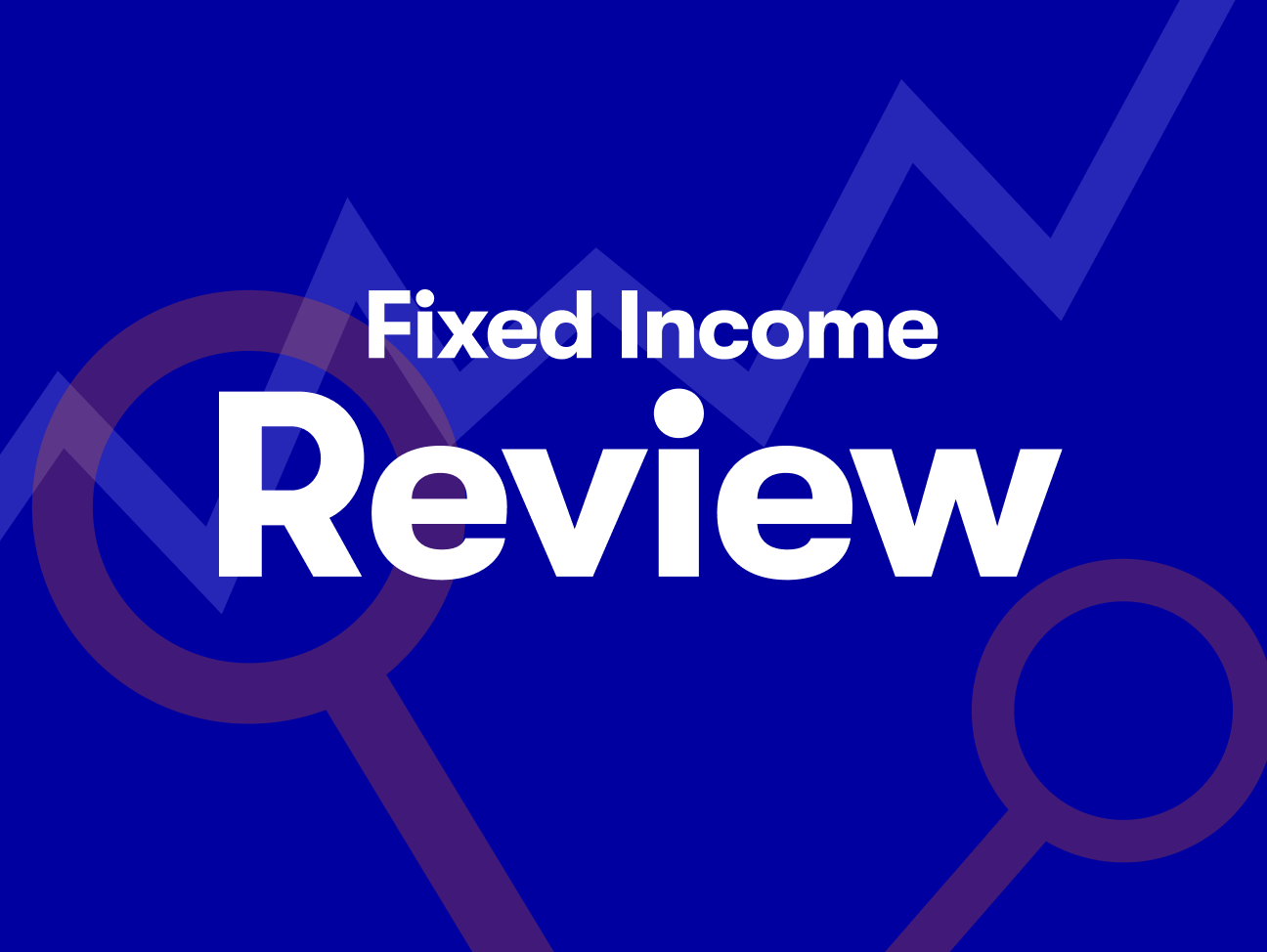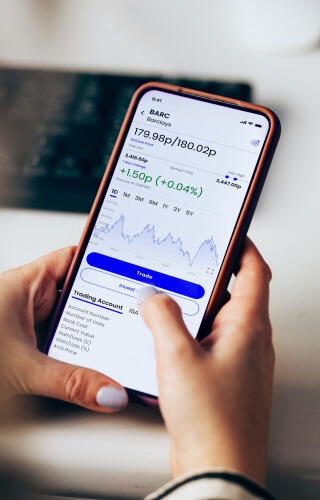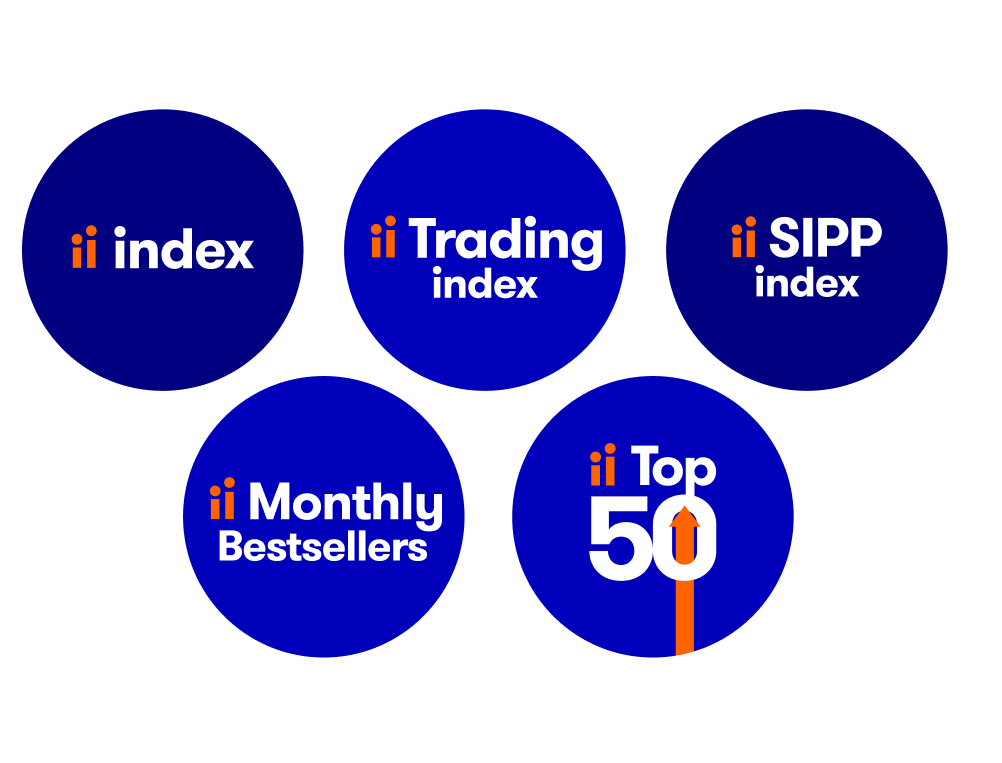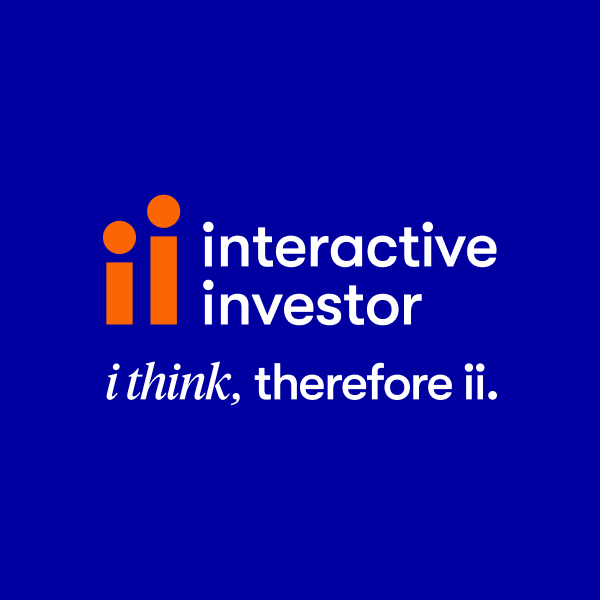Bonds & gilts
Explore fixed-income investing with bonds and gilts
Discover our list of tradable bonds and gilts to get started on your fixed-income investing journey, or simply further diversify your portfolio.
Important information: As investment values can go down as well as up, you may not get back all of the money you invest. If you're unsure about investing, please speak to an authorised financial adviser.
How do bonds and gilts work?
Bonds are a form of debt used by companies and governments to raise money. When you own a bond or bond fund, you are effectively lending money to the issuer of the bonds. In return, you get paid an income, known as the coupon.
Corporate bonds are issued by companies, while gilts is the name given to bonds issued by the UK government. Bonds and gilts can play an important role in a portfolio. They offer two main advantages: income and diversification from equities.
However, they are not risk free, as issuers can default on their debt. Bond prices can also fall for reasons like rising inflation and rising interest rates.


Why invest in bonds and gilts?
“Bonds are generally lower risk than shares. While shares offer part ownership of a company, and may come with dividends, bonds are loans to companies that should offer a more stable income stream.
Bonds, held directly or through funds, diversify portfolios and provide income, which helps reduce portfolio volatility.
Bond prices may rise during market uncertainty due to their fixed returns. They also generally do well when interest rates fall, which may happen when economies are slowing down.
However, bonds aren't always defensive – rising interest rates can lower bond values. As new bonds offer higher yields, existing ones lose value to match market rates. This occurred in 2022, when both bond and share prices fell simultaneously due to rising rates.” - Lee Wild
Learn more about how bonds and gilts work
There’s a wide range of investment options when it comes to bonds and gilts; each with its strengths and weaknesses. Explore the guides below to find out more.
Corporate bonds
Corporate bonds are loans that companies take out via financial markets.
The buyer of the bond is effectively lending their money to a company for a fixed period of time.
Government bonds
Government bonds are simply loans that governments take out via financial markets.
The investor is effectively lending their money to the state for a fixed period of time.
Bond ETFs
A bond ETF is a portfolio of bond investments that is traded on a stock exchange such as the London Stock Exchange. This allows investors to buy and sell the ETF as if they were trading a stock.
Fixed-rate bonds
Fixed rate bonds are offered by banks and building societies as a type of savings account. Savers lend their money for a fixed period of time in return for an interest rate payment. The interest rate remains the same until the bond matures.
Index-linked bonds
Also known as inflation-linked bonds, these pay a level of interest that is linked to the current rate of inflation in the market where the bonds are issued.
High-yield bonds
These bonds have higher yields than higher quality bonds, but the trade-off is that the risk of the company defaulting on their debt obligations is greater.
Money markets
Money markets are a diversified basket of safe bonds that are due to mature soon, normally with a couple of months, and they also make use of overnight savings tools, like those offered by banks.
Prices, information, data, analyses and opinions provided by Morningstar © 2025 Morningstar. All Rights Reserved. The information, data, analyses and opinions (“Information”) contained herein: (1) include the proprietary information of Morningstar and its content providers; (2) may not be copied or redistributed except as specifically authorised; (3) do not constitute investment advice; (4) are provided solely for informational purposes; (5) are not warranted to be complete, accurate or timely; and (6) may be drawn from data published on various dates. Morningstar is not responsible for any trading decisions, damages or other losses related to the Information or its use. Please verify all of the Information before using it and don’t make any investment decision except upon the advice of a professional financial adviser. Past performance is no guarantee of future results. The value and income derived from investments may go down as well as up.

Fixed income – review Q3 2025
With interest rates cut and sticky inflation in Q3, we take a look at how bonds and gilts reacted.
Great choice, even greater value
Buy and sell from just £3.99 a trade or save on trading fees with our free regular investing service.
Expert lists and top trading tips
Our investment experts pour over the markets daily, so you don’t have to. Invest smarter with better insights, ideas and most-traded lists of funds, ETFs and shares.
On-the-go investing made easy
Never miss an investment opportunity with our easy-to-use mobile app. Track the markets from your pocket and adjust your portfolio at the touch of a button.
Over 25,000 reasons to invest with ii...
Join over 500,000 investors and see why we’re Boring Money’s Best For Share Traders and Best For Investment Enthusiasts.





ii’s investment trends and insights
Our market-leading team of experts regularly gather and review the investment trends of over 500,000 ii investors. Discover the team’s latest insights to help build your knowledge as well as your portfolio.
How to buy bonds and gilts with ii

It takes just 10 minutes to open a Personal Pension (SIPP), Stocks and Shares ISA or Trading Account. You can also transfer your investments or leave it until a later date.
Don’t worry: you won’t be charged until you deposit money and start using your account.
You can trade a number of bonds and gilts via your online ii account.
For any that aren't available online, you can deal over the phone by calling us on 0345 607 6001.
Simply place an order to invest in your chosen bond. If you want to invest in the same bond every month, you can always do this with our free regular investing service.
Bonds and gilts FAQs
There is generally no limit to how much you can invest in bonds - although some will set limits.
Bond prices generally move in the opposite direction to interest rates; so when interest rates go up, bond prices go down and vice versa.
Bonds are generally considered to be among the safest investments, but they are not without risk. To get a better understanding of how bonds compare to other investments, like shares or investment trusts, go to our pages on investment risk and low-risk investing.
For further insight, our fixed income expert, Sam Benstead, answered a reader's question about bonds for our series ask ii: 'Are bonds really low risk? My portfolio keeps dropping!’
Yes, you can sell bonds before they mature. You don’t have to wait until a bond’s maturity date to sell, and this can be done on the secondary market where investors sell bonds to each other directly. If you use a broker, they may charge you a commission.
- Bonds issued by the UK government (gilts), are exempt from capital gains tax. The exemption from capital gains tax extends to options and other contracts to buy or sell gilts. However, coupons from gilts are taxed as income if the gilts are held outside of an ISA or SIPP
- Corporate bonds bought directly may also not be subject to capital gains tax, so long as they are deemed qualifying corporate bonds by HMRC. Coupons are taxable, however.
- Bond funds do not have the same tax status as individual bonds, so regular tax rules apply.
Find out more about tax rules for bonds and gilts.
You can look up the prices of both bonds and gilts using our bonds and gilts table.
A bond fund owns a portfolio of bonds.
The big difference with investing directly in a bond is that a bond fund never matures – it reinvests cash from maturing bonds and often does not hold bonds to maturity. This means bond fund investors are not locking in a set yield, but rather owning a constantly shifting portfolio of bonds whose values, and therefore the unit price of a bond fund, will constantly change as bond prices fluctuate.
On the other hand, investors looking to lock in a fixed income may be better served by holding a direct bond, such as gilt (UK government bond) to maturity. While the price of the bond will fluctuate, as the bond nears it maturity date it will return to its par value (the price it was when it was first issued) and pay that par value back to investors on maturity.
Yes, you can hold bonds within an ISA and/or a SIPP.
Yes, you can hold bonds in an ISA, SIPP or even a Trading Account. Buying bonds in a SIPP or ISA means your income and gains can grow tax-free, though SIPP withdrawals may be taxed later.
When a bond matures, the investor is repaid the sum that was borrowed by bond, known as the par value. For gilts this is £100. They also receive their final semi-annual coupon.
Learn more about bonds and gilts
Keep up to date with our ii newsletter
The markets move fast. You can move faster. Keep your finger on the pulse with impartial, expert content from our award-winning investment journalists.
